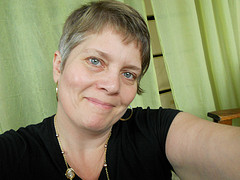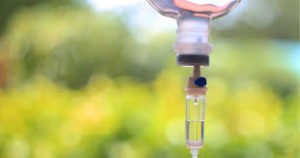
Recently Diagnosed or Relapsed? Stop Looking For a Miracle Cure, and Use Evidence-Based Therapies To Enhance Your Treatment and Prolong Your Remission
Multiple Myeloma an incurable disease, but I have spent the last 25 years in remission using a blend of conventional oncology and evidence-based nutrition, supplementation, and lifestyle therapies from peer-reviewed studies that your oncologist probably hasn't told you about.
Click the orange button to the right to learn more about what you can start doing today.
- You are here:
- Home »
- Blog »
- Multiple Myeloma »
- What is the Best Treatment For Multiple Myeloma?
What is the Best Treatment For Multiple Myeloma?

“Multiple Myeloma patients who achieved a complete remission experienced a subsequent median survival of 9.7 years compared with 4.4 years for patients who achieved partial response and 2.7 years for non-responders”
What is the best treatment for multiple myeloma? The answer is about both the chemotherapy regimen itself as well as the amount of chemo, the amount of toxicity the NDMM patient undergoes.
Below is an exchange that I had with a MM CC client recently. Anne’s comments are in purple and my comments are in black below Anne’s.
Anne (not her real name) was diagnosed at the age of 68, was stage 1 with minor bone involvement. Anne did not react well to the chemotherapy or the steroids (dexamethasone).
As the third study linked below explains, it is reaching complete remission that is the “dominant prognostic factor for long survival in patients with multiple myeloma.” Anne reached complete remission after 2 cycles of RVD Lite, well before the 4 cycles of chemotherapy that Anne’s oncologist prescribed.
By stopping her induction chemotherapy early, Anne:
- achieved complete remission,
- experienced fewer side effects,
- experienced much less damage to her body
- saved lots of money
I firmly believe that less chemo, less toxicity means that Anne will slow her inevitable progress toward multi-drug resistance aka MDR.
Hi David- I just has a preliminary talk with my oncologist about stopping my chemo (RVD Lite) before the 4 cycles are complete. He seemed quite horrified! He went on to say that after the 16 chemos were completed – we are at 11 – and as I was not a candidate for stem cell, another 16 chemos would be needed.
Hi Anne-
- 1) Can you both agree that you are currently in complete remission? This is a yes or no question.
- Can you both agree that more chemotherapy (RVD Lite) would cause more toxicity, damage, fatigue, pain, etc, etc? (again yes or no).
- Can you both agree that no one, no studies, can guarantee that more chemotherapy would result in a long term remission? In other words, nothing is guarantee to provide long term remission beyond complete remission.
- Can you both agree that more chemotherapy will cost you more money?
- If you both agree on 1, 2, 3 and 4- if you Anne, are currently in complete remission, and more chemo results in more toxicity, more damage, more chemo does NOT guarantee a long remission and finally, more chemo costs more money, then I don’t see how your oncologist can, in good conscience recommend more chemo for you at this time.
- MM Survivor
- MM Cancer Coach
- Director PeopleBeatingCancer
Recommended Reading:
- Long-Term Multiple Myeloma Survivor- If I Knew Then What I Know Now
- Multiple Myeloma- Minimal Residual Disease, Complete Remission, etc. Do you Care?
- MDR, End-Stage Multiple Myeloma- Any Suggestions?
complete remission (kum-PLEET reh-MIH-shun)
RVD-Lite Has Comparable Efficacy, Improved Toxicity in Transplant-Ineligible MM
“Modified lenalidomide, bortezomib, and dexamethasone (RVD-lite) is a highly effective and well tolerated treatment regimen among patients with multiple myeloma (MM) ineligible for transplant, according to a study published in the British Journal of Haematology.
Previous studies have shown that maximal-dose RVD leads to excellent overall response rates (ORR) and prolongs overall survival (OS) and progression-free survival (PFS) for transplant-ineligible patients with newly diagnosed MM (NDMM), but has also been associated with toxicity and frequently requires dose reductions in older patients…
Patients had a median PFS of 35.1 months, and the median OS was not evaluable after 30 months of follow-up.
The most frequently observed adverse effect was peripheral neuropathy, which occurred in 31 (62%) of 53 patients. Only 1 patient reported grade 3 symptoms.
The outcomes observed with RVD-lite was not significantly different from standard dose RVD, and had comparable efficacy, improved toxicity, and may be the new treatment standard for this patient population.
The authors concluded that “an area of future exploration will be the addition of other novel therapies such as monoclonal antibodies to this regimen with the goal of creating a curative platform for the disease.”
Complete Remission Predicts for Long Survival in Multiple Myeloma
Multiple myeloma is a cancer of the blood that affects the plasma cells, which are an important part of the immune system; they produce antibodies to help fight infection and disease. Multiple myeloma is characterized by an excess production of abnormal plasma cells. Symptoms include increased risk of bacterial infections and impaired immune responses.
The standard approach to treatment for multiple myeloma is high-dose therapy followed by autologous stem cell transplant (ASCT). The goal of treatment is to achieve a complete remission because it is assumed that this will improve survival despite limited data to validate this theory…


